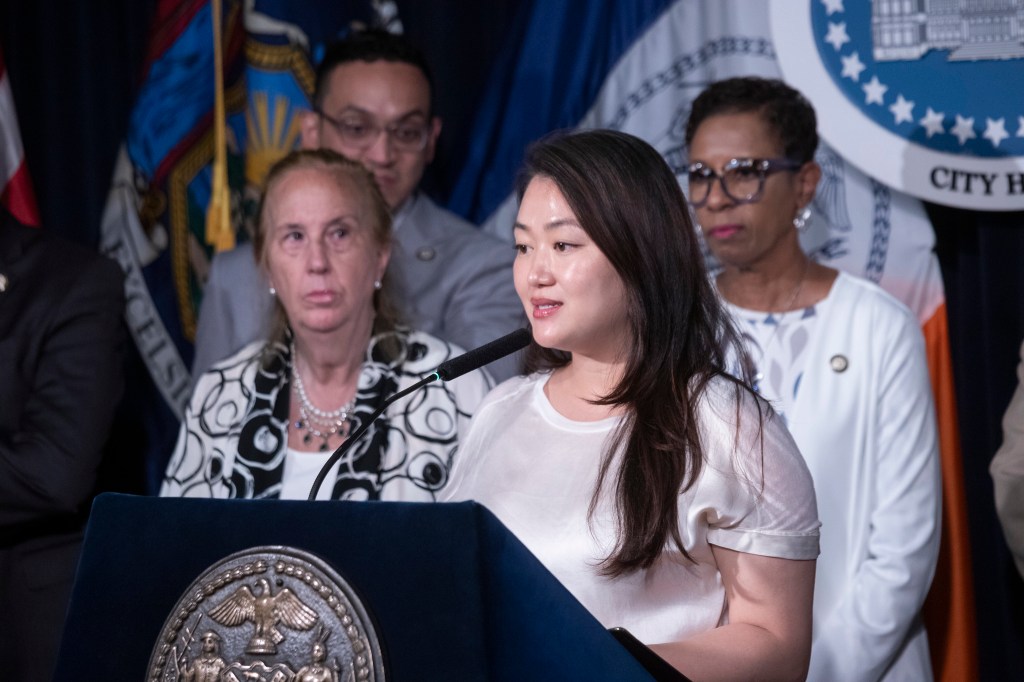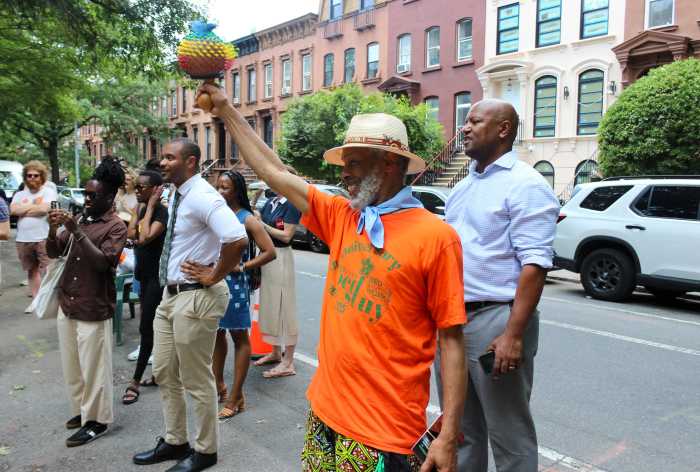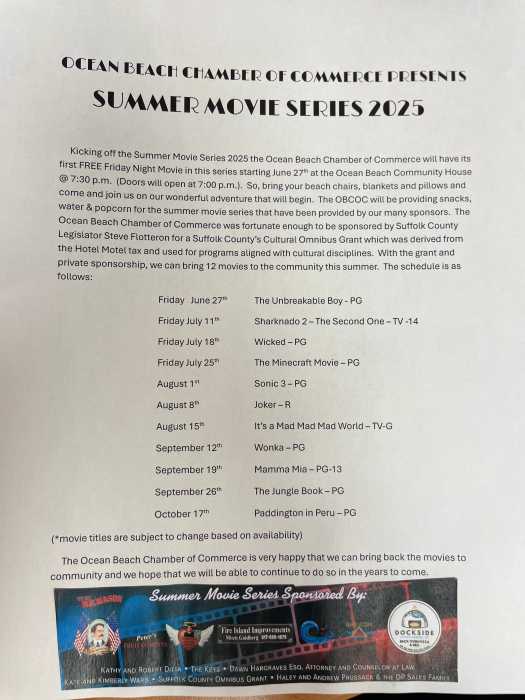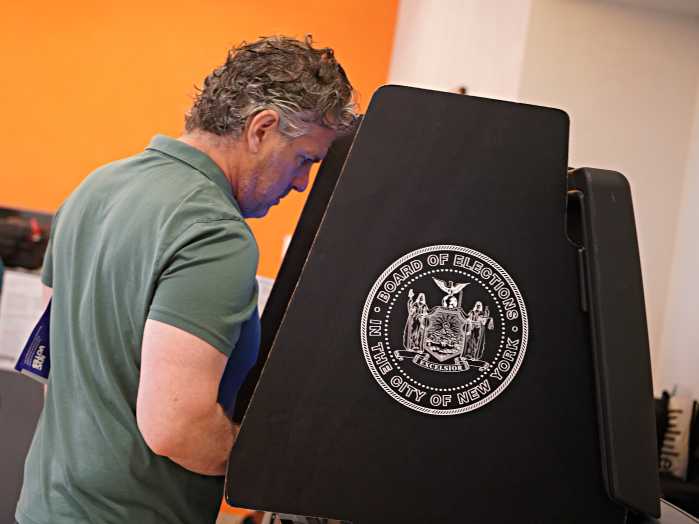Brooklyn College may have sown some seeds it will be able to reap without angry repercussions.
At a meeting called by Community Board 14 to bring community gardeners face to face with representatives of the school’s administration, ire devolved into a semblance of cooperation after over an hour of back-and-forth dialogue that, at times, verged on the confrontational.
Indeed, some of the gardeners – who had reacted negatively to the college’s recent announcement of a considerably smaller community garden brought under college control – were heard agreeing as they left the board office, 810 East 16thStreet, that they had, in fact, gotten most of what they wanted from the school.
“What was expressed tonight is far different from the statement that came out two weeks ago,” said Toby Sanchez, one of the garden’s founders, referring to a press release issued last month by Brooklyn College that gardeners had thought meant they would be, in Sanchez’s words, “excluded. We thought our message was getting lost.”
Indeed, BC officials hastened to assure the community gardeners that they were not being shut out of the oasis that they had been prime movers in creating, even though the college was taking control of the space. The garden has been located on college property since 1997, when its prior location was developed.
“The college has no intention of evicting or eliminating the community gardeners,” stressed Nicole Hosten, director of BC’s Office of College and Community Relations. Indeed, Hosten stressed, “Fifty percent of the space has been set aside for community gardeners.”
In addition, she said, additional space might be available to them, “based on demand from students and staff. We are involved in this because it is our campus,” Hosten stressed. “It has to be inclusive of our campus community too.”
Nonetheless, she said, the college needed to shrink the garden from the 6,000 square feet to which it had expanded over the past several years, to 2,500 square feet, in order to move forward with plans for the West Quad. Part of the issue, she told the group, is the need to make sure the athletic field meets NCAA requirements, as well as to provide parking that must be relocated.
While the 2,500 square foot garden is smaller than what the gardeners have been used to, it is more than had originally been intended, Hosten added, noting that, in 2000, the college had not planned for any garden at all at the location. Then, last year, she said, the college had proposed a smaller garden, but, after meeting with some of the gardeners, had decided to create the 2,500 square foot oasis, giving up two parking spots to do so.
In addition, Hosten said, the college would like to move trees and other plants that would be too large for the new community garden to another site on the campus, “acknowledging the gardeners’ contribution, so we are not losing trees and green space.”
Aparticular interest in the garden stems from the college’s commitment to sustainability, Hosten added.
“The college has a lot of interests to balance,” she emphasized.
But, if the college is so concerned about sustainability, why is it going to “pave paradise to put up a parking lot?” asked gardener Andy Snyder. “Is this the best we can do?”
“As we see it, we are going from zero to 2,500 square feet,” Hosten replied. “We can’t continue with the current size, but we don’t want to not have a garden. There’s nothing sacrosanct about 6,000 square feet, except you took it. This is what we can do and we are hoping you want to stay with us.”
Why not try to utilize some of the parking spaces available at the Junction mall? asked gardener Murray Lantner, who contended that the garden was “a real need in the community,” which, he said, suffers from a dearth of public green space.
“The college has 26 acres. I know there’s a lot of things going on, but can’t we do better?” Lantner asked.
Chris Kreussling, who writes the Flatbush Gardener blog, concurred. There is little public green space in the neighborhood that can be used actively, he stressed. “That active use is a very important aspect of what the community garden is,” Kreussling emphasized. “You can do things there, planting and weeding, that you would be arrested for doing in a park.”
The college has tried to utilize the garage at the mall, said Hosten. However, so far, she said, it has been unable to come to an arrangement with the management of the mall.
As for a larger space, she said, the 2,500 square foot garden was “the first step to making a long-term commitment” to the community garden. “Let’s see how it goes,” she told the gardeners, reminding them that the growing season was just about two months away.
As the meeting was coming to a close, South Midwood resident Susannah Laskaris captured everyone’s attention with another proposal. Why not turn the West Quad – now just a sea of grass – into a demonstration garden?
“If you want more excitement and sustainability, a quad garden would be a great place to start with a bang,” she urged. “It could really be a lead role for the college. It would be wonderful if there could be any discussion about how to get grass out of the picture, because it really is passé, environmentally.”
More than one college representative reacted positively to Laskaris’ suggestion. “I can share those thoughts,” Hosten told her, “That is something to look at going forward.”






















